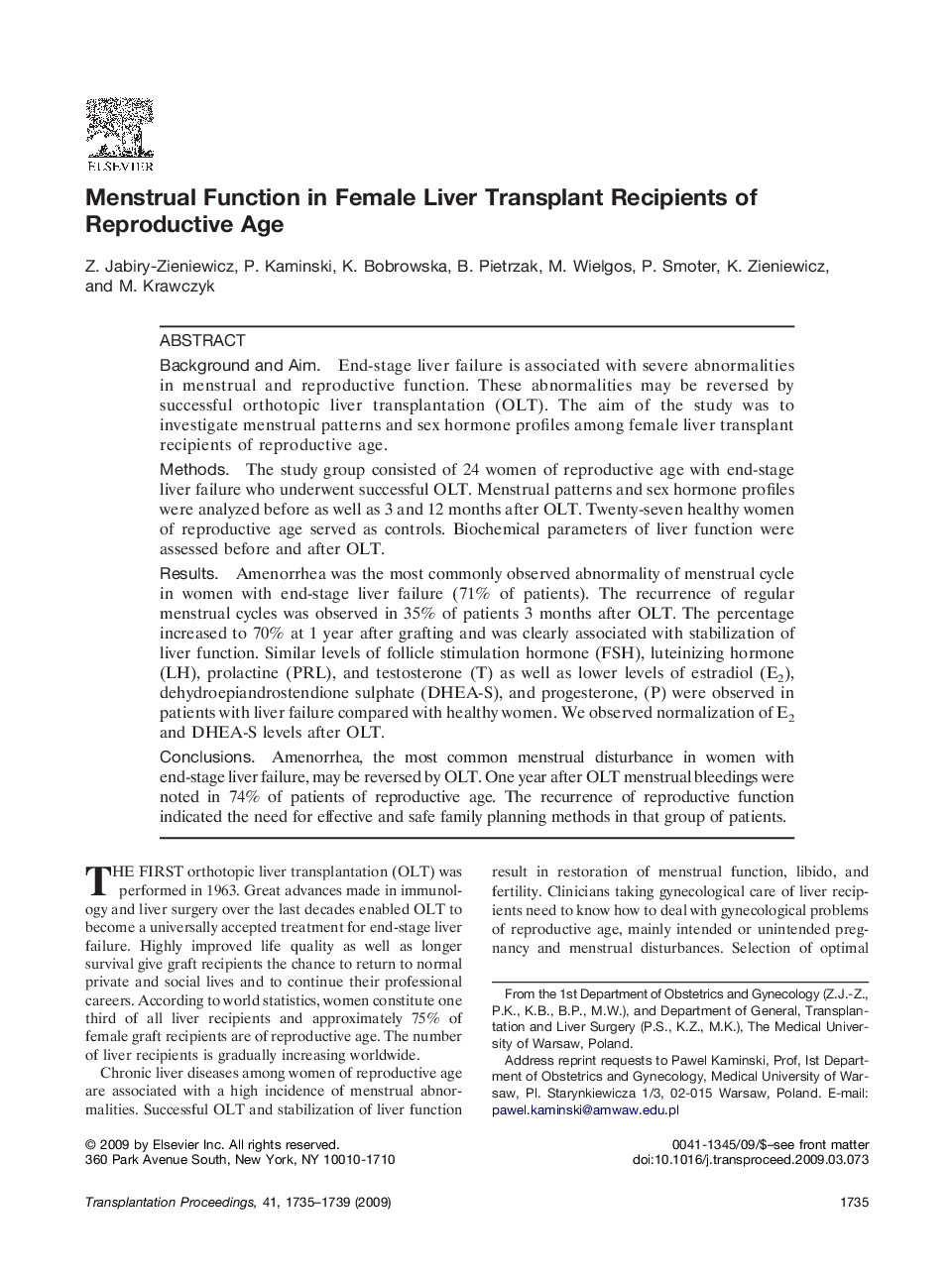| Article ID | Journal | Published Year | Pages | File Type |
|---|---|---|---|---|
| 4259276 | Transplantation Proceedings | 2009 | 5 Pages |
Background and AimEnd-stage liver failure is associated with severe abnormalities in menstrual and reproductive function. These abnormalities may be reversed by successful orthotopic liver transplantation (OLT). The aim of the study was to investigate menstrual patterns and sex hormone profiles among female liver transplant recipients of reproductive age.MethodsThe study group consisted of 24 women of reproductive age with end-stage liver failure who underwent successful OLT. Menstrual patterns and sex hormone profiles were analyzed before as well as 3 and 12 months after OLT. Twenty-seven healthy women of reproductive age served as controls. Biochemical parameters of liver function were assessed before and after OLT.ResultsAmenorrhea was the most commonly observed abnormality of menstrual cycle in women with end-stage liver failure (71% of patients). The recurrence of regular menstrual cycles was observed in 35% of patients 3 months after OLT. The percentage increased to 70% at 1 year after grafting and was clearly associated with stabilization of liver function. Similar levels of follicle stimulation hormone (FSH), luteinizing hormone (LH), prolactine (PRL), and testosterone (T) as well as lower levels of estradiol (E2), dehydroepiandrostendione sulphate (DHEA-S), and progesterone, (P) were observed in patients with liver failure compared with healthy women. We observed normalization of E2 and DHEA-S levels after OLT.ConclusionsAmenorrhea, the most common menstrual disturbance in women with end-stage liver failure, may be reversed by OLT. One year after OLT menstrual bleedings were noted in 74% of patients of reproductive age. The recurrence of reproductive function indicated the need for effective and safe family planning methods in that group of patients.
